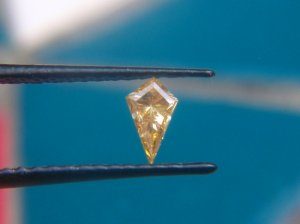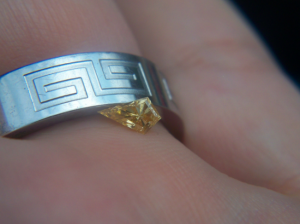- Joined
- Apr 3, 2004
- Messages
- 33,852
ClaesDiamonds said:Dear Valchira,
Yes that is true. (I did grading in IGI Antwerp.) Apologies for the phrasing.
...It's not common practice to send a SI3/P1 to GIA or HRD for example. It would go to EGL or IGI, in later case hoping it will make it into the SI2 bracket. Hence generally a good discount is available on an 'SI3' IGI which indeed on the report shows up as SI2 because no distinction is made.
Regards
Dancing Fire said:if there's sucha grade as SI3 then there should also be VVS3 and VS3 grades.IMO... SI3 is a B.S. grade just to make the consumers feel better about their stone.



+1 to Wink's excellent pointWink said:Dancing Fire said:if there's sucha grade as SI3 then there should also be VVS3 and VS3 grades.IMO... SI3 is a B.S. grade just to make the consumers feel better about their stone.
There is such a grade, just not one used by either of the top tier labs. There was a need for it in the lower clarity quality diamonds and EGL chose to fill that need.
Whether or not you or I choose to accept it or use it does not negate its existence. Since it exits, perhaps we should understand where it came from and why.
We here at Pricescope represent an incredibly small part of the market, it is our task to gradually improve the quality of information that is availabel to any who choose to avail themselves of it. To do this we must understand much more than what we think is the cream.
Wink
Wink said:DiaGem said:SI3 was implemented because of one reason only..., to soften up the value discrepancy between SI2 & I1. (which is no where near the realistic difference between VS2 & SI1).
Rapaport, instead of correcting/adjusting his price drop (sometimes as much as 50% from the down side, eg..., SI2 = 50%+ than I1) between these two grades chose the shortcut of adding the SI3 grade (to his list) which practically means SI3 value = approx 1/2 way between SI2 & I1.
<Snip>
Actually the grade was conceived of and used originally by Tom Tashey when he was with the LA branch of EGL. He felt that there was far too great a discrepancy between the SI2 grade and the I1 grade in terms of price, especially in I1 stones that looked like SI2 stones as opposed to I1 stones that looked like borderline I2 stones.
Many cutters were happy to jump on board with this as they could now get more reasonable pricing for their high I1 goods. I suspect that many stones sent to GIA and failing to get the coveted SI2 grade were re papered at EGL for the SI3 grade as this would salvage a great deal of the value for the stone that did not quite make it to SI2. As stated above, the price difference was brutal, often of inclusions very hard to detect with the unaided eye. This was long before the days of H&A and cut grades on diamond grading reports.
Wink
HI ClaesDiamonds,ClaesDiamonds said:SI3 is a grade term like any other. A term that has been given meaning and is widely accepted amongst industry members. Granted not all laboratories use it but then again, not all labs differentiate between IF and FL.
Regards.
ClaesDiamonds said:Hi Rockdiamond,
Naturally I agree with your lab preferences. Although, I would add HRD to the list. I believe the concept is widely accepted; Given the acceptance of Rapaport in the 90's it would be hard to suggest otherwise. In practice, Eg trading of diamonds, I personally have never looked at an SI uncertified stone without considering rapaport information on SI3. Calling it a bad SI or great P1 or an SI3, we all know what is meant regardless. My own experience in practice is, at presentation of a poor SI2, someone is likely going to have a quick look at SI3 on the sheet.
Kind regards.